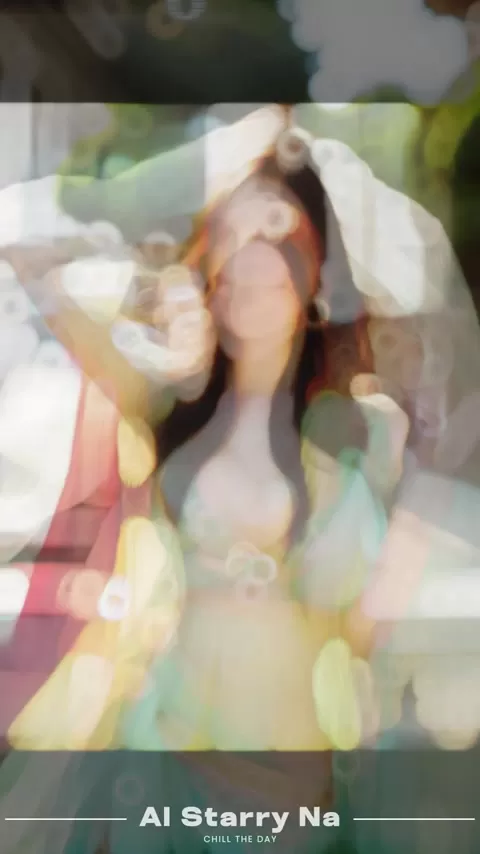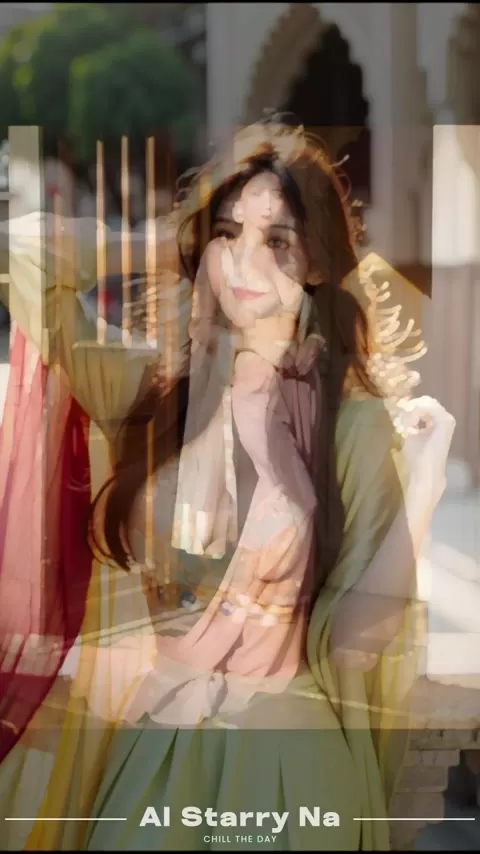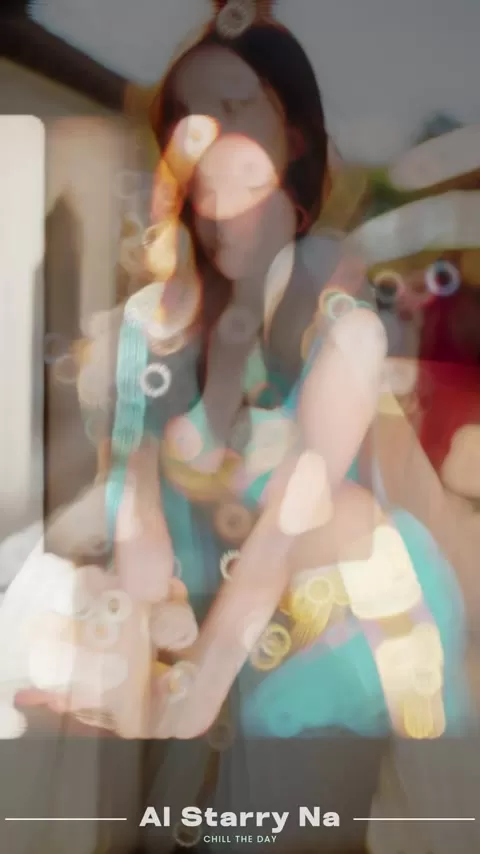Starry Na Unveils Stunning AI-Generated Fashion Models
The world of fashion is being transformed by artificial intelligence in ways that are both exciting and groundbreaking. At the forefront of this revolution is AI Starry Na, a platform that uses AI to create mesmerizingly realistic fashion models and designs. This blog post takes a closer look at AI Starry Na's innovative work, exploring how AI is reshaping the fashion industry and offering a sneak peek into the future of style and aesthetics. Prepare to dive into an enchanting realm where technology and high fashion merge, producing visuals that challenge the boundaries between reality and digital art.
The Rise of AI in Fashion
What is AI-Generated Fashion?
AI-generated fashion harnesses the power of artificial intelligence to craft clothing designs, digital models, and even complete virtual fashion shows. This cutting-edge approach utilizes machine learning and neural networks to sift through vast amounts of fashion data, birthing unique and original creations. From the initial concept to marketing, AI aids designers in streamlining their creative process, opening up new avenues for innovation and efficiency. AI-generated models, in particular, are a fascinating aspect of this technology. These digital figures showcase clothing in simulated settings, striking poses that accentuate the designs, all while highlighting the impressive capabilities of AI in creating lifelike images.
The core of AI-generated fashion is driven by sophisticated algorithms that learn and evolve. Trained on extensive datasets that include images, patterns, and style guides from different periods and cultures, these algorithms can spot trends, forecast future styles, and generate designs that align with contemporary tastes.
Different Approaches to AI Fashion
- Generative Adversarial Networks (GANs): A popular method in AI fashion, GANs feature two neural networks—a generator that produces new fashion images and a discriminator that assesses their authenticity. Through ongoing competition, the generator refines its output to create increasingly realistic and attractive designs.
- Style Transfer: This technique involves applying one image's style to another. In fashion, it could mean using the color palette, texture, or pattern from an existing piece of art on a new clothing item.
- Predictive Analytics: AI can also scrutinize market trends and consumer behavior to predict which designs might succeed. This insight helps designers make strategic choices about their collections.
The integration of AI into the fashion industry brings numerous advantages, such as boosting creativity, speeding up design cycles, enabling personalized fashion, and fostering sustainable practices by optimizing resources and minimizing waste.
Exploring the Work of AI Starry Na
AI Starry Na stands out as a prime example of how AI can produce visually captivating fashion content. By focusing on generating images of models in diverse clothing styles, AI Starry Na demonstrates the potential of AI to create enthralling and realistic fashion imagery. The models often appear in beautifully detailed environments, enhancing the visual appeal and inviting viewers into a world where fashion intertwines with fantasy.

AI Starry Na's models boast several key characteristics:
- Realistic Appearance: The lifelike features, intricate details, and natural poses of AI Starry Na's models make them nearly indistinguishable from human models.
- Diverse Styles: The AI generates models in a wide range of outfits, from traditional to contemporary, showcasing its versatility in fashion design.
- Artistic Settings: Many images feature elaborate backgrounds and scenic locations, adding depth and context to the fashion pieces and enriching the overall visual experience.
The creative process behind AI Starry Na likely involves training on vast fashion data, using generative modeling to create new images, and refining them to enhance realism and aesthetic appeal. AI Starry Na's portfolio includes models in traditional Indian attire, modern minimalist designs, and futuristic outfits, demonstrating the breadth and depth of its creative capabilities.
Diving Deeper into AI Model Creation
The Technical Foundation: How AI Models are Created
Creating AI models for fashion, like those from AI Starry Na, is a complex endeavor. Here’s an overview of the technical foundation:
- Data Collection and Preparation:
- Gathering images of clothing designs, model photos, and scene settings.
- Cleaning the data to ensure consistency and remove irrelevant images.
- Annotating images with labels describing clothing items, colors, patterns, and other attributes.
- Model Training:
- Selecting the appropriate architecture, such as GANs or Variational Autoencoders (VAEs).
- Training the AI model on the prepared dataset, with GANs using a generator and discriminator to refine images over time.
- Fine-tuning hyperparameters like learning rate and batch size to optimize results.
- Refinement and Enhancement:
- Post-processing to enhance details and improve realism.
- Manual editing by designers to add personal touches and ensure the final output aligns with their creative vision.

Challenges in AI model creation include addressing data bias, managing computational resources, and balancing realism with creative expression.
The Ethical Implications of AI Fashion Models
The rise of AI-generated fashion models brings forth ethical considerations that demand careful attention, such as representation, authorship, and the impact on human models.
- Representation and Diversity:
- AI models may inherit biases from training data, potentially perpetuating stereotypes or lacking diversity.
- Ensuring inclusivity by curating training data to represent a wide range of ethnicities, body types, and cultural backgrounds is crucial.
- Authorship and Intellectual Property:
- Determining ownership of AI-generated designs poses a complex issue, involving the AI model, the data curator, and the algorithm programmer.
- Copyright laws struggle to keep pace with AI-generated content, creating legal and ethical ambiguities.
- Impact on Human Models:
- Concerns about job displacement arise as AI models grow more realistic, though they might augment rather than replace human talent.
- AI can handle routine tasks, freeing human models to focus on more creative and expressive work.

Moving forward ethically involves transparency about AI use, establishing accountability for generated content, and fostering collaboration among AI developers, designers, and ethicists.
How to Integrate AI into Your Fashion Workflow
Step-by-Step Guide to Using AI for Fashion Design
Integrating AI into your fashion design process can enhance creativity, efficiency, and personalization. Here's a practical guide to get started:
- Identify Your Needs:
- Set clear goals for what you want to achieve with AI, whether it's generating new designs, creating realistic models, predicting trends, or personalizing clothing.
- Analyze your current workflow to identify areas where AI can add the most value.
- Choose the Right AI Tools:
- Research AI platforms tailored to fashion design, focusing on features like generative design, style transfer, and predictive analytics.
- Select tools that match your technical expertise, considering user-friendly options or those requiring programming knowledge.
- Collect and Prepare Data:
- Gather relevant fashion images, style guides, and consumer data.
- Clean and annotate the data to ensure accuracy and relevance.
- Train the AI Model:
- Choose an appropriate AI architecture, such as GANs or VAEs, based on your design objectives.
- Train the model on your prepared dataset, adjusting hyperparameters for optimal performance.
- Generate and Refine Designs:
- Use the trained AI model to generate new fashion designs.
- Evaluate and refine these designs to align with your creative vision, possibly involving manual editing.
- Implement and Test:
- Incorporate AI-generated designs into your fashion collection or product line.
- Gather feedback from customers and stakeholders to assess the effectiveness of your AI integration and refine your process.

Tips for successful AI integration include starting with a small-scale project, collaborating with AI experts, and staying informed about the latest advancements in AI technology and fashion design.
Understanding the Costs of AI Fashion Tools
Cost Factors for AI-Driven Fashion
The cost of AI fashion tools varies based on several factors, including the type of tool, features offered, and the vendor. Key cost elements include:
- Subscription Fees: Many platforms operate on a subscription model, charging a recurring fee for access to tools and services.
- Usage-Based Pricing: Some platforms charge based on usage, such as the number of images generated or computational resources consumed.
- Custom Development Costs: Developing custom AI models or integrating AI solutions into existing systems can involve significant upfront costs.
Examples of AI fashion tool pricing include:
- Runway ML: Offers AI tools for creative tasks, including fashion design, with pricing ranging from free plans to custom enterprise solutions.
- DeepMotion: Specializes in AI-powered motion capture and animation, with pricing based on usage and different rates for individual and enterprise users.
- Vue.ai: Provides AI-driven solutions for e-commerce, with pricing tailored to each customer's specific needs.
Cost-saving strategies include taking advantage of free trials, optimizing resource usage, and exploring open-source AI solutions. When evaluating pricing, consider the features, scalability, and level of support offered by each tool.
Weighing the Advantages and Disadvantages of AI Fashion
Pros
- Enhanced Creativity: AI tools can inspire new ideas and push the limits of design.
- Faster Design Cycles: AI automates repetitive tasks, speeding up the design process.
- Personalized Fashion: AI can tailor clothing designs to individual preferences and body types.
- Sustainable Practices: By optimizing resources and reducing waste, AI can promote sustainable fashion practices.
Cons
- Potential for Bias: AI models can inherit biases from their training data, leading to non-diverse or unrepresentative outputs.
- Lack of Human Touch: AI-generated content may lack the unique artistic touch and emotional depth that human designers bring.
- Computational Costs: Training AI models requires significant computational resources and time.
- Ethical Concerns: Legal and ethical ambiguities surrounding intellectual property rights can pose challenges for AI-generated designs.
Key Capabilities of AI in Fashion
Exploring AI's Core Features
AI is revolutionizing fashion with a range of core features that enhance creativity, streamline processes, and personalize customer experiences. Here are some key capabilities:
- Generative Design:
- Automated design creation based on predefined parameters and style inputs, allowing designers to explore numerous possibilities quickly.
- Style exploration, enabling experimentation with different styles, patterns, and colors.
- Style Transfer:
- Applying artistic styles from one image to clothing, creating visually appealing designs.
- Creating theme-based designs by transferring patterns or color schemes onto clothing items.
- Predictive Analytics:
- Trend forecasting by analyzing market trends and consumer behavior to predict successful designs.
- Inventory optimization by forecasting demand for different products.
- Virtual Try-On:
- Enhancing the customer experience with AI-powered virtual try-on tools, reducing the likelihood of returns.
- Providing personalized recommendations based on virtual try-on history and preferences.
- Automated Pattern Making:
- Streamlining production by automating pattern making, reducing time and resources.
- Generating patterns tailored to individual body measurements for a custom fit.
- 3D Modeling and Visualization:
- Creating realistic 3D models of clothing for visualization and marketing.
- Staging virtual fashion shows with AI-generated models and clothing designs.

These features increase creativity, improve efficiency, and offer personalized experiences, leading to enhanced customer satisfaction and loyalty.
Real-World Applications: AI Fashion in Action
Examples of AI Fashion Successes
AI's versatility in fashion is showcased through various real-world applications across the industry. Here are some notable examples:
- Personalized Clothing Recommendations:
- E-commerce platforms use AI to analyze customer data and provide personalized clothing recommendations, enhancing the shopping experience and boosting sales.
- Stitch Fix uses AI to curate personalized clothing boxes, ensuring each item matches individual style and preferences.
- Virtual Fashion Shows:
- AI-generated models and virtual environments create immersive fashion shows, reaching a global audience and reducing environmental impact.
- Hanifa staged a virtual fashion show featuring 3D models of its clothing, showcasing innovative designs and reaching a wider audience.
- Custom Apparel Design:
- AI-powered tools allow customers to design custom apparel based on their body measurements and style preferences, ensuring a perfect fit.
- MTailor uses AI to create custom-fitted shirts and suits based on smartphone measurements.
- Sustainable Fashion Practices:
- AI analyzes data to optimize resource allocation, reduce waste, and promote sustainable fashion practices.
- Project JUST uses AI to assess the sustainability practices of fashion brands, helping consumers make informed purchasing decisions.
- Visual Search:
- AI-powered visual search tools enable customers to find clothing items by uploading images or screenshots, simplifying the shopping process.
- ASOS uses visual search to help customers find similar items by uploading images of clothing they like.
- Enhanced Inventory Management:
- AI algorithms forecast demand for different products, helping retailers optimize inventory levels and reduce stockouts.
- Zara uses AI to analyze sales data and predict popular items, ensuring they have enough stock to meet customer demand.

As AI technology evolves, its applications in fashion will become even more diverse and sophisticated, playing a central role in design, production, retail, and sustainability.
Frequently Asked Questions
Are AI-generated models replacing human models?
While AI-generated models are becoming more realistic and sophisticated, they are unlikely to completely replace human models. AI models can handle routine tasks and virtual presentations, but human models bring unique creativity and expressiveness to fashion campaigns. The industry is likely to see a blend of AI and human talent, with AI augmenting human capabilities.
How can AI help with sustainable fashion?
AI can contribute to sustainable fashion by optimizing resource allocation, reducing waste, and promoting responsible production practices. For example, AI can analyze data to predict demand, optimize inventory levels, and assess the sustainability practices of fashion brands, helping consumers make informed purchasing decisions. By reducing waste and promoting responsible sourcing, AI can help the fashion industry minimize its environmental impact.
What are the ethical concerns surrounding AI in fashion?
The ethical concerns surrounding AI in fashion include issues of representation, authorship, and the potential displacement of human models. AI models can inherit biases from their training data, leading to outputs that are not diverse or representative. Determining authorship for AI-generated content is a complex issue, and the increasing realism of AI models raises concerns about job displacement for human models. Addressing these ethical concerns requires transparency, accountability, and collaboration between AI developers, designers, and ethicists.
Related Questions
What are the limitations of AI in fashion?
While AI offers numerous benefits to the fashion industry, it also has several limitations. One key limitation is the potential for bias in AI-generated content. If training datasets are not diverse or representative, AI can perpetuate stereotypes or fail to reflect real-world diversity, leading to non-inclusive or culturally insensitive designs. Another limitation is the challenge of balancing realism with creativity. AI-generated content may lack the unique artistic touch and emotional depth that human designers bring. Additionally, training AI models requires significant computational resources and time, making it costly and time-consuming. Finally, legal and ethical ambiguities surrounding intellectual property rights pose challenges for AI-generated fashion designs.
How do AI algorithms generate fashion designs?
AI algorithms generate fashion designs through machine learning techniques, neural networks, and data analysis. These algorithms are trained on extensive datasets containing images, patterns, and style guides from various eras and cultures. By analyzing this data, AI can identify trends, predict future styles, and generate novel designs that resonate with current aesthetic preferences. Generative Adversarial Networks (GANs) are popular for AI fashion, with a generator creating new images and a discriminator assessing their authenticity. Through continuous competition, the generator refines its output. Style transfer applies the style of one image to another, while predictive analytics analyzes market trends and consumer behavior to forecast successful designs. These techniques enable AI to produce a diverse range of fashion designs, from traditional to futuristic.
Related article
 Seeking Faith and Purpose in an Age of Skepticism
In our modern age of scientific inquiry and critical thinking, maintaining spiritual faith often feels like walking against the tide. Many struggle to reconcile timeless beliefs with contemporary skepticism, leaving them longing for deeper meaning. T
Seeking Faith and Purpose in an Age of Skepticism
In our modern age of scientific inquiry and critical thinking, maintaining spiritual faith often feels like walking against the tide. Many struggle to reconcile timeless beliefs with contemporary skepticism, leaving them longing for deeper meaning. T
 How ChatGPT Works: Capabilities, Applications, and Future Implications
The rapid evolution of artificial intelligence is transforming digital interactions and communication. Leading this transformation is ChatGPT, an advanced conversational AI that sets new standards for natural language processing. This in-depth examin
How ChatGPT Works: Capabilities, Applications, and Future Implications
The rapid evolution of artificial intelligence is transforming digital interactions and communication. Leading this transformation is ChatGPT, an advanced conversational AI that sets new standards for natural language processing. This in-depth examin
 Salesforce’s Transformer Model Guide: AI Text Summarization Explained
In an era where information overload is the norm, AI-powered text summarization has become an indispensable tool for extracting key insights from lengthy documents. This comprehensive guide examines Salesforce's groundbreaking AI summarization techno
Comments (18)
0/200
Salesforce’s Transformer Model Guide: AI Text Summarization Explained
In an era where information overload is the norm, AI-powered text summarization has become an indispensable tool for extracting key insights from lengthy documents. This comprehensive guide examines Salesforce's groundbreaking AI summarization techno
Comments (18)
0/200
![StevenSanchez]() StevenSanchez
StevenSanchez
 August 22, 2025 at 3:01:25 PM EDT
August 22, 2025 at 3:01:25 PM EDT
AI fashion models? Mind blown! Starry Na's designs look so real, it's like they're walking off the screen. Can't wait to see how this shakes up the runway! 😍


 0
0
![FrankRodriguez]() FrankRodriguez
FrankRodriguez
 July 31, 2025 at 7:35:39 AM EDT
July 31, 2025 at 7:35:39 AM EDT
This AI fashion model stuff is wild! Starry Na's designs look so real, it's like they're about to walk off the screen. Makes me wonder if we'll even need human models soon. 😮 Cool tech, but kinda spooky too!


 0
0
![WillPerez]() WillPerez
WillPerez
 July 27, 2025 at 9:20:03 PM EDT
July 27, 2025 at 9:20:03 PM EDT
AI Starry Na's fashion models look so real, it's wild! 😍 Curious how these virtual designs might change the runway game in the future.


 0
0
![ChristopherThomas]() ChristopherThomas
ChristopherThomas
 April 25, 2025 at 2:09:47 AM EDT
April 25, 2025 at 2:09:47 AM EDT
The AI-generated models from Starry Na are breathtaking! It's like they're real, but better. The fashion designs are also top-notch. Only thing is, it's a bit too perfect sometimes, which can feel a bit uncanny. Still, a game-changer for the fashion industry! 👗


 0
0
![JustinAnderson]() JustinAnderson
JustinAnderson
 April 24, 2025 at 8:01:26 PM EDT
April 24, 2025 at 8:01:26 PM EDT
¡Los modelos generados por IA de Starry Na son impresionantes! Se ven tan reales que parecen que podrían salir de la pantalla. El único inconveniente es que a veces la ropa es demasiado vanguardista para mi gusto. Aún así, es una herramienta revolucionaria para el diseño de moda! 😍


 0
0
![LeviKing]() LeviKing
LeviKing
 April 24, 2025 at 7:59:00 PM EDT
April 24, 2025 at 7:59:00 PM EDT
스타리나의 AI 모델 정말 대박이에요! 너무 리얼해서 화면에서 걸어 나올 것 같아요. 다만, 가끔 옷이 제 취향에는 너무 전위적이에요. 그래도 패션 디자인에 혁신을 가져올 도구라고 생각해요! 😍


 0
0
The world of fashion is being transformed by artificial intelligence in ways that are both exciting and groundbreaking. At the forefront of this revolution is AI Starry Na, a platform that uses AI to create mesmerizingly realistic fashion models and designs. This blog post takes a closer look at AI Starry Na's innovative work, exploring how AI is reshaping the fashion industry and offering a sneak peek into the future of style and aesthetics. Prepare to dive into an enchanting realm where technology and high fashion merge, producing visuals that challenge the boundaries between reality and digital art.
The Rise of AI in Fashion
What is AI-Generated Fashion?
AI-generated fashion harnesses the power of artificial intelligence to craft clothing designs, digital models, and even complete virtual fashion shows. This cutting-edge approach utilizes machine learning and neural networks to sift through vast amounts of fashion data, birthing unique and original creations. From the initial concept to marketing, AI aids designers in streamlining their creative process, opening up new avenues for innovation and efficiency. AI-generated models, in particular, are a fascinating aspect of this technology. These digital figures showcase clothing in simulated settings, striking poses that accentuate the designs, all while highlighting the impressive capabilities of AI in creating lifelike images.
The core of AI-generated fashion is driven by sophisticated algorithms that learn and evolve. Trained on extensive datasets that include images, patterns, and style guides from different periods and cultures, these algorithms can spot trends, forecast future styles, and generate designs that align with contemporary tastes.
Different Approaches to AI Fashion
- Generative Adversarial Networks (GANs): A popular method in AI fashion, GANs feature two neural networks—a generator that produces new fashion images and a discriminator that assesses their authenticity. Through ongoing competition, the generator refines its output to create increasingly realistic and attractive designs.
- Style Transfer: This technique involves applying one image's style to another. In fashion, it could mean using the color palette, texture, or pattern from an existing piece of art on a new clothing item.
- Predictive Analytics: AI can also scrutinize market trends and consumer behavior to predict which designs might succeed. This insight helps designers make strategic choices about their collections.
The integration of AI into the fashion industry brings numerous advantages, such as boosting creativity, speeding up design cycles, enabling personalized fashion, and fostering sustainable practices by optimizing resources and minimizing waste.
Exploring the Work of AI Starry Na
AI Starry Na stands out as a prime example of how AI can produce visually captivating fashion content. By focusing on generating images of models in diverse clothing styles, AI Starry Na demonstrates the potential of AI to create enthralling and realistic fashion imagery. The models often appear in beautifully detailed environments, enhancing the visual appeal and inviting viewers into a world where fashion intertwines with fantasy.

AI Starry Na's models boast several key characteristics:
- Realistic Appearance: The lifelike features, intricate details, and natural poses of AI Starry Na's models make them nearly indistinguishable from human models.
- Diverse Styles: The AI generates models in a wide range of outfits, from traditional to contemporary, showcasing its versatility in fashion design.
- Artistic Settings: Many images feature elaborate backgrounds and scenic locations, adding depth and context to the fashion pieces and enriching the overall visual experience.
The creative process behind AI Starry Na likely involves training on vast fashion data, using generative modeling to create new images, and refining them to enhance realism and aesthetic appeal. AI Starry Na's portfolio includes models in traditional Indian attire, modern minimalist designs, and futuristic outfits, demonstrating the breadth and depth of its creative capabilities.
Diving Deeper into AI Model Creation
The Technical Foundation: How AI Models are Created
Creating AI models for fashion, like those from AI Starry Na, is a complex endeavor. Here’s an overview of the technical foundation:
- Data Collection and Preparation:
- Gathering images of clothing designs, model photos, and scene settings.
- Cleaning the data to ensure consistency and remove irrelevant images.
- Annotating images with labels describing clothing items, colors, patterns, and other attributes.
- Model Training:
- Selecting the appropriate architecture, such as GANs or Variational Autoencoders (VAEs).
- Training the AI model on the prepared dataset, with GANs using a generator and discriminator to refine images over time.
- Fine-tuning hyperparameters like learning rate and batch size to optimize results.
- Refinement and Enhancement:
- Post-processing to enhance details and improve realism.
- Manual editing by designers to add personal touches and ensure the final output aligns with their creative vision.

Challenges in AI model creation include addressing data bias, managing computational resources, and balancing realism with creative expression.
The Ethical Implications of AI Fashion Models
The rise of AI-generated fashion models brings forth ethical considerations that demand careful attention, such as representation, authorship, and the impact on human models.
- Representation and Diversity:
- AI models may inherit biases from training data, potentially perpetuating stereotypes or lacking diversity.
- Ensuring inclusivity by curating training data to represent a wide range of ethnicities, body types, and cultural backgrounds is crucial.
- Authorship and Intellectual Property:
- Determining ownership of AI-generated designs poses a complex issue, involving the AI model, the data curator, and the algorithm programmer.
- Copyright laws struggle to keep pace with AI-generated content, creating legal and ethical ambiguities.
- Impact on Human Models:
- Concerns about job displacement arise as AI models grow more realistic, though they might augment rather than replace human talent.
- AI can handle routine tasks, freeing human models to focus on more creative and expressive work.

Moving forward ethically involves transparency about AI use, establishing accountability for generated content, and fostering collaboration among AI developers, designers, and ethicists.
How to Integrate AI into Your Fashion Workflow
Step-by-Step Guide to Using AI for Fashion Design
Integrating AI into your fashion design process can enhance creativity, efficiency, and personalization. Here's a practical guide to get started:
- Identify Your Needs:
- Set clear goals for what you want to achieve with AI, whether it's generating new designs, creating realistic models, predicting trends, or personalizing clothing.
- Analyze your current workflow to identify areas where AI can add the most value.
- Choose the Right AI Tools:
- Research AI platforms tailored to fashion design, focusing on features like generative design, style transfer, and predictive analytics.
- Select tools that match your technical expertise, considering user-friendly options or those requiring programming knowledge.
- Collect and Prepare Data:
- Gather relevant fashion images, style guides, and consumer data.
- Clean and annotate the data to ensure accuracy and relevance.
- Train the AI Model:
- Choose an appropriate AI architecture, such as GANs or VAEs, based on your design objectives.
- Train the model on your prepared dataset, adjusting hyperparameters for optimal performance.
- Generate and Refine Designs:
- Use the trained AI model to generate new fashion designs.
- Evaluate and refine these designs to align with your creative vision, possibly involving manual editing.
- Implement and Test:
- Incorporate AI-generated designs into your fashion collection or product line.
- Gather feedback from customers and stakeholders to assess the effectiveness of your AI integration and refine your process.

Tips for successful AI integration include starting with a small-scale project, collaborating with AI experts, and staying informed about the latest advancements in AI technology and fashion design.
Understanding the Costs of AI Fashion Tools
Cost Factors for AI-Driven Fashion
The cost of AI fashion tools varies based on several factors, including the type of tool, features offered, and the vendor. Key cost elements include:
- Subscription Fees: Many platforms operate on a subscription model, charging a recurring fee for access to tools and services.
- Usage-Based Pricing: Some platforms charge based on usage, such as the number of images generated or computational resources consumed.
- Custom Development Costs: Developing custom AI models or integrating AI solutions into existing systems can involve significant upfront costs.
Examples of AI fashion tool pricing include:
- Runway ML: Offers AI tools for creative tasks, including fashion design, with pricing ranging from free plans to custom enterprise solutions.
- DeepMotion: Specializes in AI-powered motion capture and animation, with pricing based on usage and different rates for individual and enterprise users.
- Vue.ai: Provides AI-driven solutions for e-commerce, with pricing tailored to each customer's specific needs.
Cost-saving strategies include taking advantage of free trials, optimizing resource usage, and exploring open-source AI solutions. When evaluating pricing, consider the features, scalability, and level of support offered by each tool.
Weighing the Advantages and Disadvantages of AI Fashion
Pros
- Enhanced Creativity: AI tools can inspire new ideas and push the limits of design.
- Faster Design Cycles: AI automates repetitive tasks, speeding up the design process.
- Personalized Fashion: AI can tailor clothing designs to individual preferences and body types.
- Sustainable Practices: By optimizing resources and reducing waste, AI can promote sustainable fashion practices.
Cons
- Potential for Bias: AI models can inherit biases from their training data, leading to non-diverse or unrepresentative outputs.
- Lack of Human Touch: AI-generated content may lack the unique artistic touch and emotional depth that human designers bring.
- Computational Costs: Training AI models requires significant computational resources and time.
- Ethical Concerns: Legal and ethical ambiguities surrounding intellectual property rights can pose challenges for AI-generated designs.
Key Capabilities of AI in Fashion
Exploring AI's Core Features
AI is revolutionizing fashion with a range of core features that enhance creativity, streamline processes, and personalize customer experiences. Here are some key capabilities:
- Generative Design:
- Automated design creation based on predefined parameters and style inputs, allowing designers to explore numerous possibilities quickly.
- Style exploration, enabling experimentation with different styles, patterns, and colors.
- Style Transfer:
- Applying artistic styles from one image to clothing, creating visually appealing designs.
- Creating theme-based designs by transferring patterns or color schemes onto clothing items.
- Predictive Analytics:
- Trend forecasting by analyzing market trends and consumer behavior to predict successful designs.
- Inventory optimization by forecasting demand for different products.
- Virtual Try-On:
- Enhancing the customer experience with AI-powered virtual try-on tools, reducing the likelihood of returns.
- Providing personalized recommendations based on virtual try-on history and preferences.
- Automated Pattern Making:
- Streamlining production by automating pattern making, reducing time and resources.
- Generating patterns tailored to individual body measurements for a custom fit.
- 3D Modeling and Visualization:
- Creating realistic 3D models of clothing for visualization and marketing.
- Staging virtual fashion shows with AI-generated models and clothing designs.

These features increase creativity, improve efficiency, and offer personalized experiences, leading to enhanced customer satisfaction and loyalty.
Real-World Applications: AI Fashion in Action
Examples of AI Fashion Successes
AI's versatility in fashion is showcased through various real-world applications across the industry. Here are some notable examples:
- Personalized Clothing Recommendations:
- E-commerce platforms use AI to analyze customer data and provide personalized clothing recommendations, enhancing the shopping experience and boosting sales.
- Stitch Fix uses AI to curate personalized clothing boxes, ensuring each item matches individual style and preferences.
- Virtual Fashion Shows:
- AI-generated models and virtual environments create immersive fashion shows, reaching a global audience and reducing environmental impact.
- Hanifa staged a virtual fashion show featuring 3D models of its clothing, showcasing innovative designs and reaching a wider audience.
- Custom Apparel Design:
- AI-powered tools allow customers to design custom apparel based on their body measurements and style preferences, ensuring a perfect fit.
- MTailor uses AI to create custom-fitted shirts and suits based on smartphone measurements.
- Sustainable Fashion Practices:
- AI analyzes data to optimize resource allocation, reduce waste, and promote sustainable fashion practices.
- Project JUST uses AI to assess the sustainability practices of fashion brands, helping consumers make informed purchasing decisions.
- Visual Search:
- AI-powered visual search tools enable customers to find clothing items by uploading images or screenshots, simplifying the shopping process.
- ASOS uses visual search to help customers find similar items by uploading images of clothing they like.
- Enhanced Inventory Management:
- AI algorithms forecast demand for different products, helping retailers optimize inventory levels and reduce stockouts.
- Zara uses AI to analyze sales data and predict popular items, ensuring they have enough stock to meet customer demand.

As AI technology evolves, its applications in fashion will become even more diverse and sophisticated, playing a central role in design, production, retail, and sustainability.
Frequently Asked Questions
Are AI-generated models replacing human models?
While AI-generated models are becoming more realistic and sophisticated, they are unlikely to completely replace human models. AI models can handle routine tasks and virtual presentations, but human models bring unique creativity and expressiveness to fashion campaigns. The industry is likely to see a blend of AI and human talent, with AI augmenting human capabilities.
How can AI help with sustainable fashion?
AI can contribute to sustainable fashion by optimizing resource allocation, reducing waste, and promoting responsible production practices. For example, AI can analyze data to predict demand, optimize inventory levels, and assess the sustainability practices of fashion brands, helping consumers make informed purchasing decisions. By reducing waste and promoting responsible sourcing, AI can help the fashion industry minimize its environmental impact.
What are the ethical concerns surrounding AI in fashion?
The ethical concerns surrounding AI in fashion include issues of representation, authorship, and the potential displacement of human models. AI models can inherit biases from their training data, leading to outputs that are not diverse or representative. Determining authorship for AI-generated content is a complex issue, and the increasing realism of AI models raises concerns about job displacement for human models. Addressing these ethical concerns requires transparency, accountability, and collaboration between AI developers, designers, and ethicists.
Related Questions
What are the limitations of AI in fashion?
While AI offers numerous benefits to the fashion industry, it also has several limitations. One key limitation is the potential for bias in AI-generated content. If training datasets are not diverse or representative, AI can perpetuate stereotypes or fail to reflect real-world diversity, leading to non-inclusive or culturally insensitive designs. Another limitation is the challenge of balancing realism with creativity. AI-generated content may lack the unique artistic touch and emotional depth that human designers bring. Additionally, training AI models requires significant computational resources and time, making it costly and time-consuming. Finally, legal and ethical ambiguities surrounding intellectual property rights pose challenges for AI-generated fashion designs.
How do AI algorithms generate fashion designs?
AI algorithms generate fashion designs through machine learning techniques, neural networks, and data analysis. These algorithms are trained on extensive datasets containing images, patterns, and style guides from various eras and cultures. By analyzing this data, AI can identify trends, predict future styles, and generate novel designs that resonate with current aesthetic preferences. Generative Adversarial Networks (GANs) are popular for AI fashion, with a generator creating new images and a discriminator assessing their authenticity. Through continuous competition, the generator refines its output. Style transfer applies the style of one image to another, while predictive analytics analyzes market trends and consumer behavior to forecast successful designs. These techniques enable AI to produce a diverse range of fashion designs, from traditional to futuristic.
 Seeking Faith and Purpose in an Age of Skepticism
In our modern age of scientific inquiry and critical thinking, maintaining spiritual faith often feels like walking against the tide. Many struggle to reconcile timeless beliefs with contemporary skepticism, leaving them longing for deeper meaning. T
Seeking Faith and Purpose in an Age of Skepticism
In our modern age of scientific inquiry and critical thinking, maintaining spiritual faith often feels like walking against the tide. Many struggle to reconcile timeless beliefs with contemporary skepticism, leaving them longing for deeper meaning. T
 How ChatGPT Works: Capabilities, Applications, and Future Implications
The rapid evolution of artificial intelligence is transforming digital interactions and communication. Leading this transformation is ChatGPT, an advanced conversational AI that sets new standards for natural language processing. This in-depth examin
How ChatGPT Works: Capabilities, Applications, and Future Implications
The rapid evolution of artificial intelligence is transforming digital interactions and communication. Leading this transformation is ChatGPT, an advanced conversational AI that sets new standards for natural language processing. This in-depth examin
 Salesforce’s Transformer Model Guide: AI Text Summarization Explained
In an era where information overload is the norm, AI-powered text summarization has become an indispensable tool for extracting key insights from lengthy documents. This comprehensive guide examines Salesforce's groundbreaking AI summarization techno
Salesforce’s Transformer Model Guide: AI Text Summarization Explained
In an era where information overload is the norm, AI-powered text summarization has become an indispensable tool for extracting key insights from lengthy documents. This comprehensive guide examines Salesforce's groundbreaking AI summarization techno
 August 22, 2025 at 3:01:25 PM EDT
August 22, 2025 at 3:01:25 PM EDT
AI fashion models? Mind blown! Starry Na's designs look so real, it's like they're walking off the screen. Can't wait to see how this shakes up the runway! 😍


 0
0
 July 31, 2025 at 7:35:39 AM EDT
July 31, 2025 at 7:35:39 AM EDT
This AI fashion model stuff is wild! Starry Na's designs look so real, it's like they're about to walk off the screen. Makes me wonder if we'll even need human models soon. 😮 Cool tech, but kinda spooky too!


 0
0
 July 27, 2025 at 9:20:03 PM EDT
July 27, 2025 at 9:20:03 PM EDT
AI Starry Na's fashion models look so real, it's wild! 😍 Curious how these virtual designs might change the runway game in the future.


 0
0
 April 25, 2025 at 2:09:47 AM EDT
April 25, 2025 at 2:09:47 AM EDT
The AI-generated models from Starry Na are breathtaking! It's like they're real, but better. The fashion designs are also top-notch. Only thing is, it's a bit too perfect sometimes, which can feel a bit uncanny. Still, a game-changer for the fashion industry! 👗


 0
0
 April 24, 2025 at 8:01:26 PM EDT
April 24, 2025 at 8:01:26 PM EDT
¡Los modelos generados por IA de Starry Na son impresionantes! Se ven tan reales que parecen que podrían salir de la pantalla. El único inconveniente es que a veces la ropa es demasiado vanguardista para mi gusto. Aún así, es una herramienta revolucionaria para el diseño de moda! 😍


 0
0
 April 24, 2025 at 7:59:00 PM EDT
April 24, 2025 at 7:59:00 PM EDT
스타리나의 AI 모델 정말 대박이에요! 너무 리얼해서 화면에서 걸어 나올 것 같아요. 다만, 가끔 옷이 제 취향에는 너무 전위적이에요. 그래도 패션 디자인에 혁신을 가져올 도구라고 생각해요! 😍


 0
0





























